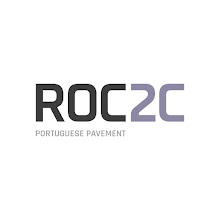Jardim Guerra Junqueiro, previously named Jardim da Estrela, is the coolest and most charming park in Lisbon.
The park has been renamed after the famous Portuguese writer Guerra Junqueiro, but most Lisbon locals actually only know it by its former name. Weird enough there’s a sign just outside the south entrance (in front of the Basílica da Estrela church) still referring to it as Jardim da Estrela.
The park is 4.6 hectares (that’s 11.4 acres to my American friends) and sits between the Basílica da Estrela church, the Military hospital and an old English cemetery – Cemitério Inglês – right at the heart of the city. If you are planning a city trip to Lisbon make sure you don’t miss it; you can find the map, directions and nearby mass transit here.
(if you find yourself trapped in the city on a scorching summer day then I definitely recommend you to visit the park as it’s always a few degrees cooler)
All the entrances feature large cast iron gates and the entire park is surrounded by 8-foot high fence.
Inside Jardim da Estrela the diverse vegetation and large trees lavishes a unique and somewhat mysterious atmosphere. In some parts of the park the thick trees’ crowns screen the sunlight that dapples the surrounding vegetation with different shades of green you could not possibly imagine and which you seldom find anywhere else in Lisbon.
The pedestrian winding paths let you explore all the corners of the park – the outer path features the typical Portuguese cobblestone pavement (Calçada Portuguesa).
Sit on one of the wooden benches spread along the route and enjoy the vegetation (I particularly like the alien-looking Ficus trees) and slow pace and relaxed atmosphere.
Something that never ceases to amaze me is the diversity of people coming to Jardim da Estrela, from families with children, hipsters, tourists, casual city dwellers going for a coffee to elderly meeting friends for some dominoes or a quick nap under the trees.
One of the most noticeable constructions is the cast iron bandstand that sits right in the middle of the garden. This element was not part of the original layout, but moved from Avenida da Liberdade into the park back in 1936.
The bandstand still hosts several music events, especially during the summer months. The most famous one, and my favorite, is the Outjazz Lisboa festival which takes place every Sunday in May; more on this one of these days.
The bandstand still hosts several music events, especially during the summer months. The most famous one, and my favorite, is the Outjazz Lisboa festival which takes place every Sunday in May; more on this one of these days.
Other constructions in Jardim da Estrela include a restaurant and patio, a small coffee stand, a lake, a kindergarten, a couple of children playgrounds and a tiny City Hall library stand.
There’s also a man built viewpoint on the southeast end of the park but unfortunately access is closed to public due to rock fall hazard and collapse.
Although I have never seen it, I have found several references to a grotto. It remains a mystery, at least for me, whether this element still exists, possibility in the closed area, or removed during one of the many renovations of the past.
There’s also a man built viewpoint on the southeast end of the park but unfortunately access is closed to public due to rock fall hazard and collapse.
Although I have never seen it, I have found several references to a grotto. It remains a mystery, at least for me, whether this element still exists, possibility in the closed area, or removed during one of the many renovations of the past.
Now a bit of history…. The park construction began in 1842 and took almost 10 years to be finalized. When it finally opened, in 1852, it becomes one of the social venues of the Lisbon life.
The park’s layout and infrastructure has suffered several changes along the years, like the original greenhouses, street stands and a Chinese pavilion that no longer exist. Around 1870 the main attraction in the park was an African lion, brought into the country by the African Portuguese explorer Paiva Raposo.
The flora diversity and richness of Jardim da Estrela has always been one of its characteristics and attractions. Since 1852 several botanic exhibitions and markets, including some flower farming fairs.
If you happen to visit the park during Saturday or Sunday morning don’t forget to check out the antique street market for some typical Portuguese bargains.






Comentários
Enviar um comentário